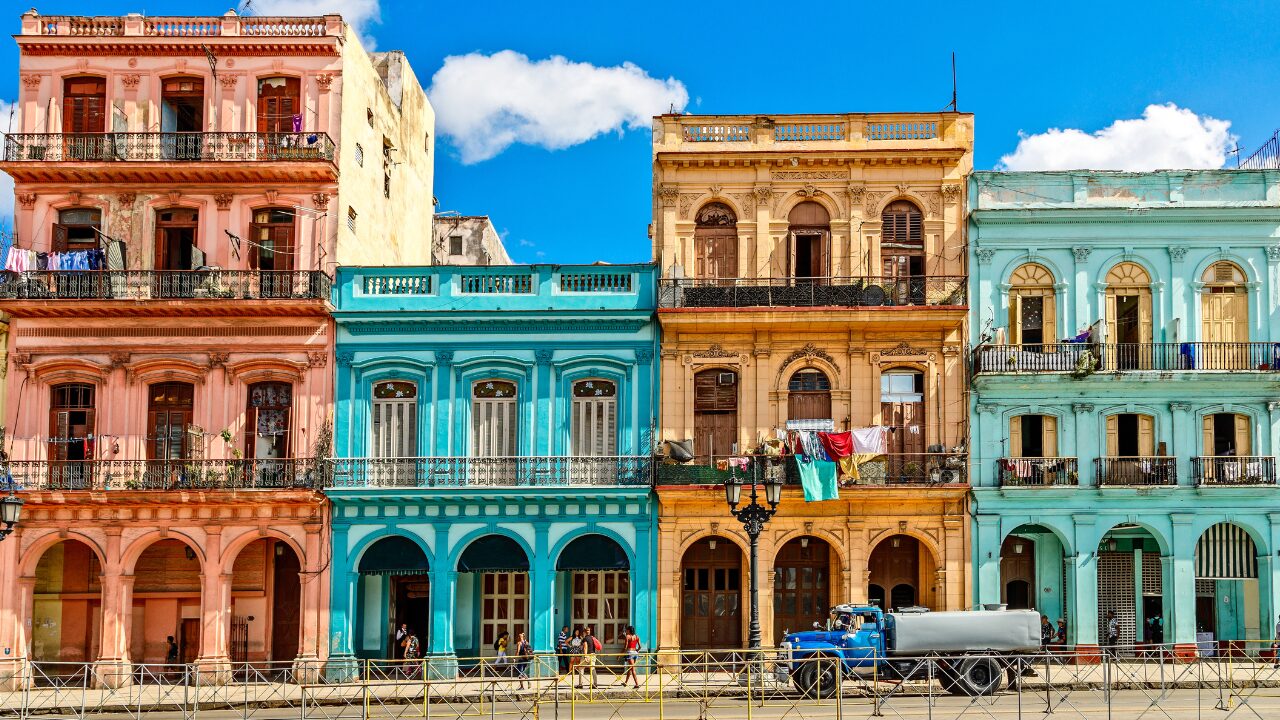Date first published: 08/06/2017
Key risks: slow growth; sovereign payment
Key sectors: tourism; agriculture
1950’s Havana was a city of giant casinos, run by mobsters like Lucky Luciano and Meyer Lansky, and attracted the biggest stars of the age – from Frank Sinatra, to Ava Gardener, to JFK. Cuba was a major agricultural exporter, notably sugar cane and its famous tobacco. While plagued by inequality, GDP per capita was some US$2,067 a year, and Cuba was on the path towards middle income status. But half a century of a brutal dictatorship, economic mismanagement and a US embargo slowed development. The economy was to be transformed when in 2015 US President Barack Obama announced his ‘Cuban Thaw’, restarting diplomatic relations and relaxing sanctions. Yet, for the first time since 1993, the economy contracted in 2016.
Cuba’s difficult 2016 reflects two underlying issues. Firstly, while Cuban private business has been expanding since the mid 1990s, only a third of Cubans work in the private sector. Access to credit is limited, taxes high, and poor transport and telecommunication infrastructure makes the development of anything more than small local private enterprise difficult.
Secondly, the inefficient domestic economy and the US trade embargo left Cuba dependent on foreign financial support. During the Cold War, the economy was supported by subsidies from the USSR. The breakup of the USSR initially left Cuba without a patron, and in the early 1990s the economy collapsed. Hugo Chavez’ Venezuela eventually picked up the slack. Venezuela would ship in excess of 100,000 barrels of subsidized oil to Cuba as part of the Petrocaribe programme. Reselling subsidised oil allowed the Cuban economy to expand in the early 2000s. But Venezuela’s collapse has resulted in a halving of oil shipments. By 2016 Havana was almost entirely deprived from this source of funding. An increase in support from Russia and China has not fill the gap.
The relaxation of US sanctions opened the door for foreign investment to mitigate these problems. Major companies including Sheraton Four Points Hotel started operations, but outside the tourism sector foreign investment is weak. The lack of investment is partially a response to uncertainty over the Trump administration’s position on the normalisation of relations, but at least as important is the lack of reforms. Cuba’s economy is distorted by the use of two currencies – the Cuban convertible peso (CUC) for foreigners and largely used in the private sector, and the peso (CUP). The CUC is pegged to the dollar and formally worth 24 times as much as the CUP, but on paper the two currencies are considered equal in value. The system harms investment, as foreign investors pay wages to the state employment agency in convertible currency, while workers are remunerated at the same nominal amount in local Cuban currency.
Over time it is likely that the end of Petrocaribe and the opportunities opened following the relaxation of sanctions will catalyse currency realignment and liberalisation. The economy is already normalising. Cuba has reached deals with its international creditors to restructure defaulted debt from the 1980s. Havana is also reported to have started discussions over restructuring its outstanding private sector obligations. Thus, there are signs of progress and the government appears committed towards improving Cuba’s economy. But that progress will be slow and, as the experience of the Former Soviet Union and Eastern Europe show, sequencing a transition from a state-centric economy is difficult at the best of times.



